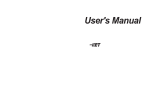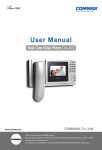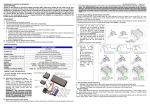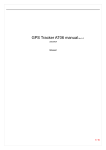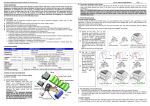Download The Care of Bells - St. Luke Orthodox Church
Transcript
Blßgovest Bells From Russia’s Premiere Foundries Tel. 1-415-256-2512 Fax 1-415-256-9268 508 San Anselmo Avenue, Suite 1B San Anselmo, CA 94960 USA www.russianbells.com BAAR MOSCOW, RUSSIA BLAGOVEST BELLS BELL ART ASSOCIATION OF RUSSIA, BAAR’S US REPRESENTATIVES Basic Rules for the Care of Church Bells User’s Manual Basic Elements of a Church Bell 1 To keep bells free from harm it is necessary to observe strictly the following rules: 1. The bell should be suspended freely from its beam by strong links. When the bell is hit strongly, it should have some freedom to swing so that the impact is softened. The bell must not be jammed so tightly to the beam that cracking of the bell might result after a strong strike. 2. The bell has only one place for striking— the strike zone. If the clapper is suspended so that it strikes the bell above or below this zone, the bell may be lost. In addition, such suspension will result in distorted, and improper sound. In no circumstances may the bell be rung by striking upon its outer surface. This will damage the bell. The clapper suspension must be regularly inspected and periodically adjusted, depending on the degree of wear in the hinged junctions and stretching of ropes. 3. The strength of impact should be scaled to the size of the bell. The sound of one-pud (36 lbs.) bell cannot be heard a mile away. No matter how hard you try, you cannot increase the volume of sound striking the bell harder, and excessive strength striking will crack the bell. To avoid cracking the bell ring, it must be struck so that upon striking the freely suspended bell remains practically still at the moment of impact. If bell trembles after each strike of clapper, it will not have a long life. 4. The internal crystalline structure of the bell is permanently stressed somewhat like a tightly stretched string. During cold weather, the internal stress increases, and bells become more fragile. On frosty days it is necessary preliminarily to “warm” bells by a series of gentle peals on both edges and, thereafter, to strike bells more delicately than in warm weather. 5. Bell ringing safety - do not arrange the ringer’s workplace directly under the bells, and keep the area free from extraneous stuff; - regularly inspect the reliability of the suspension of both bells and clappers, as metal can rust, wear, and break; - without fail, ringers must use personal ear protectors to protect their hearing when ringing bells, either ear-plugs or headphone-like industrial ear protectors. 6. Unless the foundry was specifically instructed otherwise, the profiles of bells and weight of clappers were designed for internal clapper ringing, and not at all for swinging peals (when bell itself is swinging). Therefore, ring bells as designated only. 7. Upon the installation of bells the owner should immediately communicate with the insurance company which insures the church building, and have the bells included in the insurance policy as attached or built-in equipment. Note that even small bells are considered part of your church real estate. 8. Each bell ringer must be familiar with these rules, and must agree to follow them. We also recommend obtaining and maintaining formal records of each bell ringer’s agreement, in such a form as the following: I am familiar with the above rules for the care of church bells and I agree to follow them (date, name and signature). By following these rules, bells will last indefinitely for future generation. Faithfully yours Blßgovest Bells 2


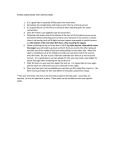
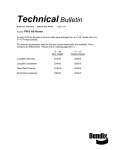




![[PF03] User manual for RED DOT CLUSTERS(EN) - Auto](http://vs1.manualzilla.com/store/data/005713867_1-90b7ac4617a5dc924635c3e0ee039806-150x150.png)
